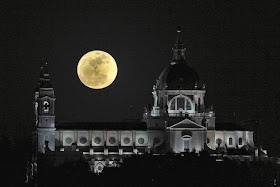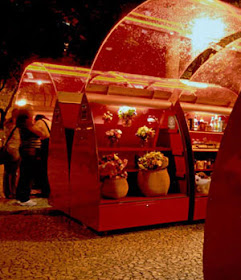Noda, Iwate. From Clarin.com
From Inhabitat.com, an excerpt from the article by Diane Pham:
From seawalls that line stretches of Japan’s coastline, to skyscrapers that sway to absorb earthquakes, to unrelenting building codes, there is no other country better prepared for an earthquake than Japan. Over the years, the country has invested billions of dollars developing new technology to aid in protecting their citizens and infrastructure against earthquakes and tsunamis.
Buildings in the country have been built to be earthquake proof, and construction focuses on deep foundation and massive shock absorbers to dampen seismic energy in the event of an earthquake. Another method that is often employed in construction is to create a base for the building that would allow it to move semi-independently from the total structure, in turn reducing the shaking caused by a quake. As seen in the video taken above by an onlooker in the neighborhood of Shinjuku, while the buildings sway, they do not collapse. In fact, not one building in Tokyo fell despite the record breaking magnitude – a true testament to the level of engineering involved in the construction of their structures.
Keep on reading:
¨Japan could not protect its entire coastline against tsunami with its system of seawalls. And with sizable aftershocks still occurring, the final death toll will not be known for some time. But it will be a fraction of the 230,000 deaths seen in Haiti following last year's earthquake.
That's in spite of the fact that the Port-au-Prince earthquake was far smaller in magnitude than Friday's, which was 8.9 — one of the largest earthquakes ever recorded.
"The biggest difference between a place like Haiti and Japan is that in Japan, they experience earthquakes frequently and they build the habits of a high level of earthquake technology into their engineering," says Miyamoto, who is president of a structural engineering firm based in California.
"They get a magnitude earthquake of 7 or 8 every decade, so naturally they get good at it," he says.
ncome inequality rarely matters so much as it does when it comes to surviving earthquakes. Japan is a wealthy nation that can afford to build structures capable of standing up to sustained shaking. But places like Haiti, which was already one of the world's poorest nations before its devastating earthquake struck, can't.
Japan faces enormous recovery and rebuilding costs, but it can afford to pay them, says Roger Bilham, a University of Colorado geologist. "Basically, when you have an earthquake in developing countries, they die," he says. "In the developed countries, they pay."
In poor countries, Bilham says, badly constructed houses are "an unrecognized weapon of mass destruction."
Corruption And Collapse
The type of brittle, poorly mixed concrete often used in Haiti was a major factor in the enormous death toll there last year, with thousands of buildings damaged. According to Bilham, Haiti's earthquake caused more than twice as many deaths as any previous 7.0 earthquake.
Building failures also accounted for the bulk of the nearly 90,000 deaths caused by an 8.0 earthquake in 2008 in Sichuan, China. That earthquake led to loud complaints about corruption and shoddy materials used in school construction.
Bilham co-authored a study published in Nature in January that found 83 percent of quake deaths from building collapse over the past 30 years happened in countries that were especially corrupt.
Builders sometimes find it cheaper to pay bribes than build according to code.¨
Read the full article:









































